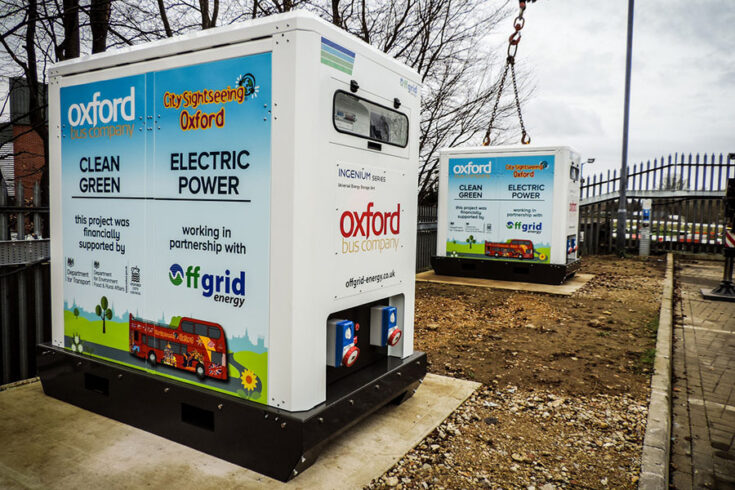Meeting the UK’s net zero targets will require more of our heating and transport to be electrified, but the resulting increase in demand for electricity will put pressure on the networks.
While additional infrastructure, such as pylons, cables and substations, could accommodate demand, it is costly and disruptive to install. So a project in Oxfordshire is exploring how changes to technology, markets and people’s behaviour could instead reduce constraints with the creation of a smart local energy system.
Video credit: UKRI
On-screen captions and an autogenerated transcript are available on YouTube.
Flexible distribution network
Melanie Bryce, Oxfordshire Programme Director at Scottish and Southern Electricity Networks, which is leading Project LEO, said:
Traditionally, an increase in demand on the network would require upgrades to wires and cables, and the disruption of digging up of roads.
The project is looking at how new technology can help make the existing energy system more flexible, so infrastructure can be used more efficiently. This flexibility also helps accommodate and maximise the use of existing and new renewable energy generation.
A flexible distribution network is one where both consumers and generators are paid to temporarily change how much energy they are either using or generating in response to the needs of their local network, helping to keep it within limits.
Understanding flexibility at the ‘grid-edge’
Part-funded with £15 million from UK Research and Innovation’s (UKRI’s) prospering from the energy revolution challenge, Project LEO is drawing on the expertise of:
- local authorities
- social enterprise
- academic and industry partners.
As a major demonstrator project in the UKRI programme, it aims to build up a bank of valuable data, insights and practical guidance. This can be used to support policy changes in the UK’s energy transition and help accelerate the UK’s journey to net zero.
The project’s focus is on understanding flexibility at the ‘grid-edge’, the point at which homes and businesses connect to the network.
Melanie said:
For a long time, our interaction with the grid-edge hasn’t changed much.
But now, not only do we need to free up more space on the distribution network for low carbon technologies like electric vehicles and heat pumps, but people also have the capability to generate power in their homes with solar power and other low-carbon technologies, so we need to make sure that we can fit more renewable generation onto the distribution network.
Our trials are investigating the management and monitoring of these low-carbon technologies and how they might contribute to managing the electricity network during, for example, periods of peak electricity demand or at other times when the system is nearing its limits.
Three key areas
Project LEO is exploring three key areas:
- technology: such as installing monitors on low-voltage networks to understand what needs to happen to make them ready for a change to a smart local energy system and using advanced geographical mapping tools to help inform decision making. This also includes developing the IT systems to model the electricity network in near to real time, and enable a market in flexibility
- new models and markets: exploring new products and services that create commercial opportunities for industry, as well as benefits to customers by enabling the fair trading of energy flexibility services and capacity
- society: working within local communities to trial different approaches to harnessing the potential of energy users in their area to deliver flexibility at the grid edge.
Melanie said:
A smart network is more than just wires and switches. Technology is vital for optimising usage, but it’s not enough in isolation. Moving towards zero-carbon energy requires changes to the way people use and interact with energy in their everyday lives, so it’s important to engage with people in a meaningful way.
Then you also need to create the right commercial opportunities and regulatory environment to make it workable from an industry point of view.
The three-year project doesn’t end until March 2023, but already its learnings about smart local grids are being shared nationally and internationally.
Flexibility services will play a key role in meeting zero-carbon targets. Our hope is that Project LEO will not just benefit Oxfordshire but also accelerate a journey to smart local energy systems elsewhere, too.
About the project
Project LEO is funded via UKRI’s prospering from the energy revolution. It is one of the UK’s most ambitious, wide-ranging and innovative energy trials, seeking to accelerate the UK’s transition to a zero-carbon energy system.
Project LEO is running trials in Oxfordshire to understand how new technologies and services, particularly at the ‘edge’ of the network, closest to the point where people are using energy, can benefit local people, communities, and the energy system.
Find out more
Top image: Battery storage units. Credit: Oxford Bus Company

